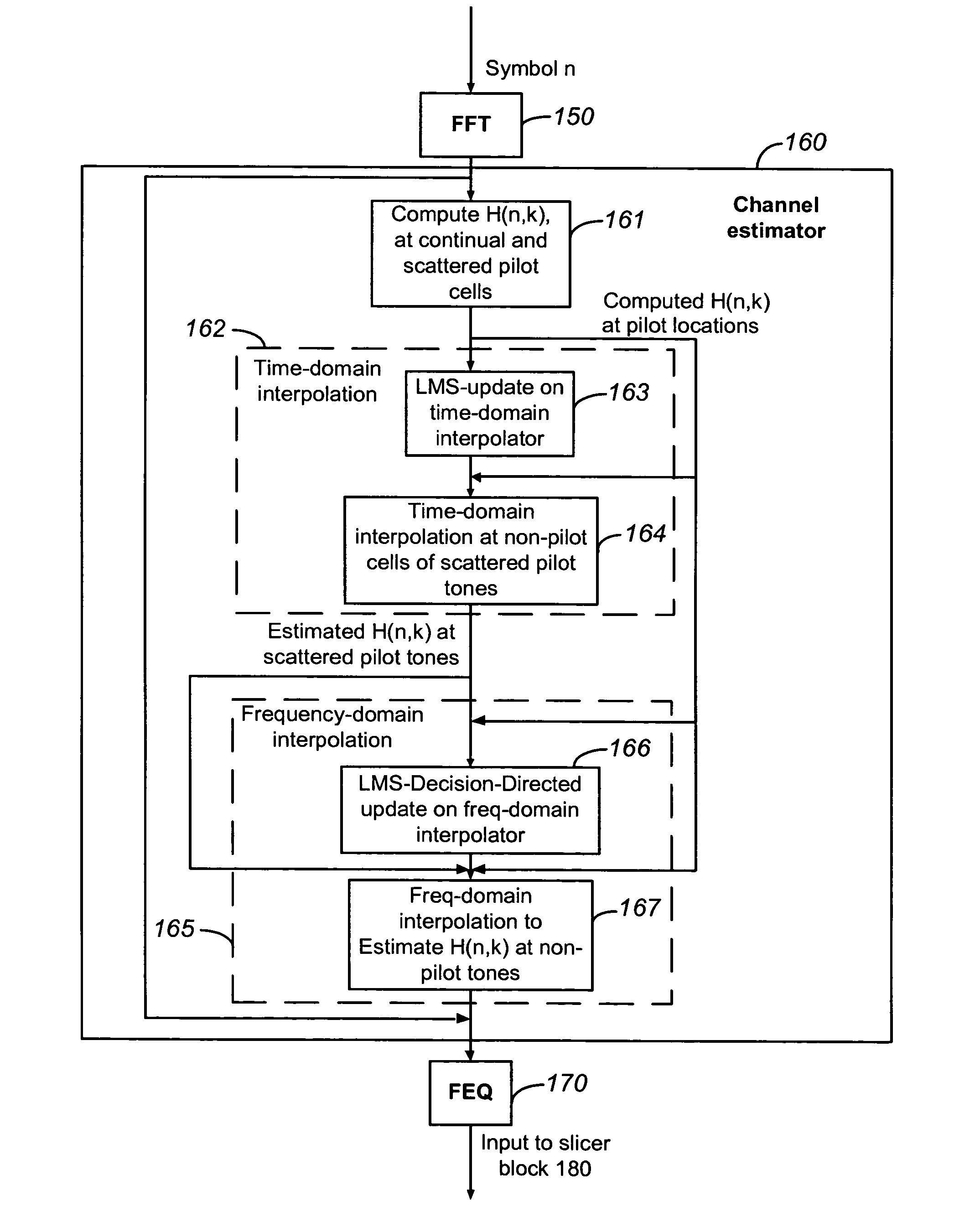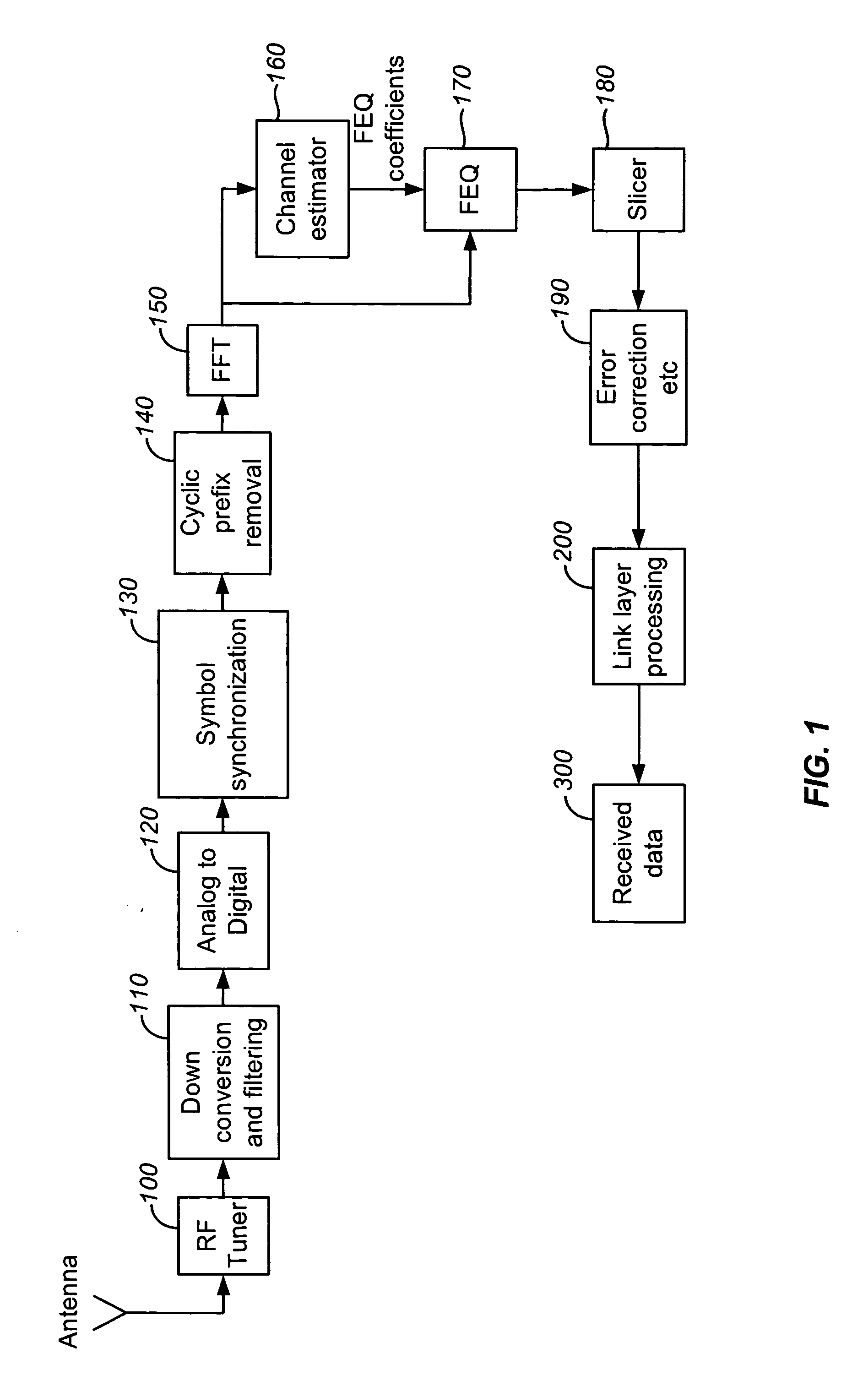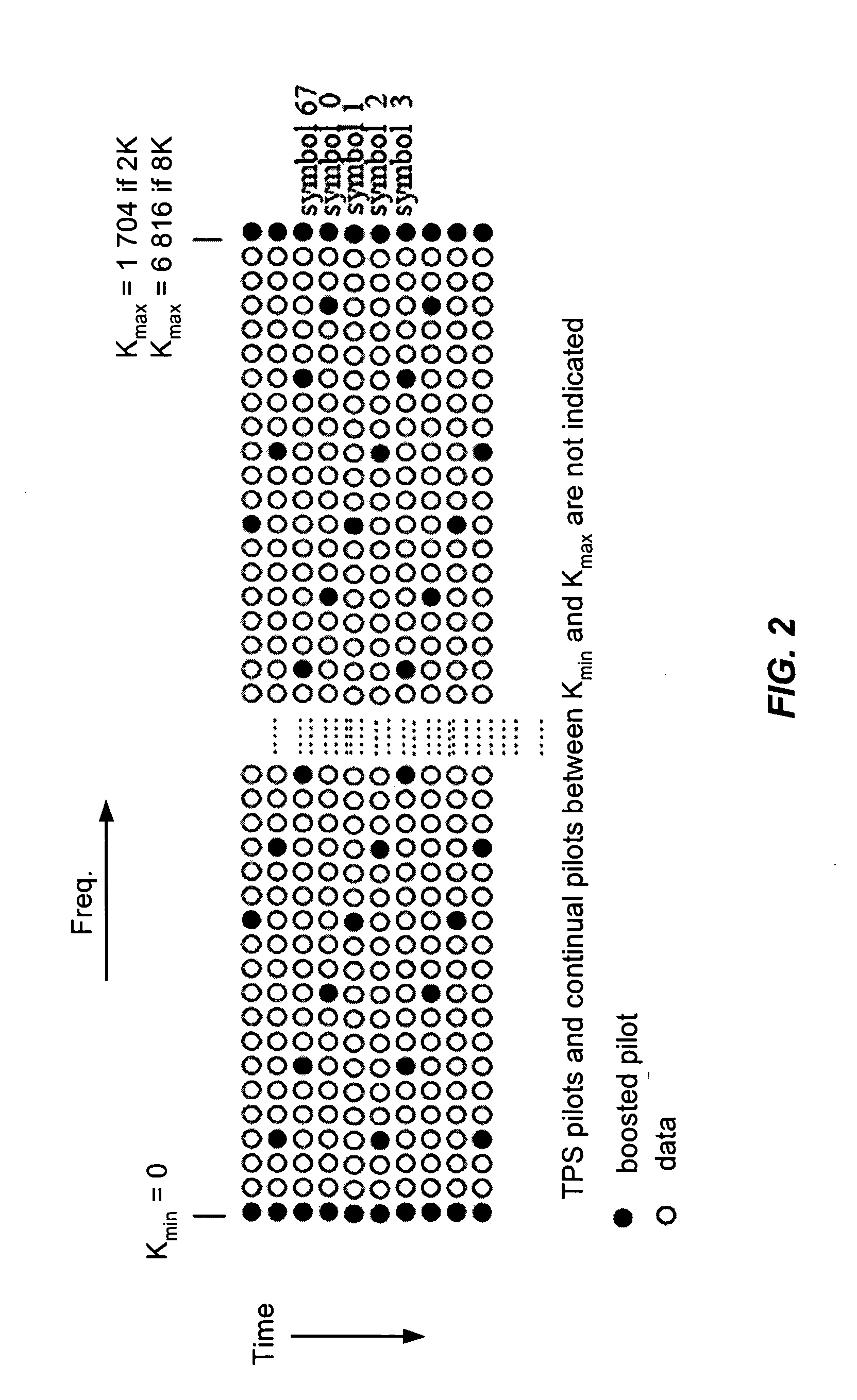Adaptive interpolator for channel estimation
a channel estimation and interpolator technology, applied in the field of wireless communication systems, can solve problems such as signal distortion, reduced data transmission rate, and inability to transmit reference signals too frequently
- Summary
- Abstract
- Description
- Claims
- Application Information
AI Technical Summary
Benefits of technology
Problems solved by technology
Method used
Image
Examples
Embodiment Construction
[0036] In accordance with the present invention, the interpolation filter coefficients are adaptively adjusted on-line to optimize the estimation accuracy and minimize the mean square error. In one embodiment, the low-complexity least-mean-square (LMS) adaptation algorithm is used for the coefficient adaptation. Using the LMS algorithm, prior knowledge of the channel characteristics including noise is not needed. The interpolation filter automatically converges to the optimal setting to minimize the mean squared error. The computation in the LMS algorithm is simple and the complexity is low. As the channel conditions change, the filter coefficients will automatically re-converge to the new optimal setting. Therefore, the interpolation filter improves performance with possibly a fewer number of taps.
[0037] Complex coefficients are used for the interpolation filter to improve the performance, shorten the filter span, and allow asymmetric distribution of the filter taps. The asymmetry...
PUM
 Login to View More
Login to View More Abstract
Description
Claims
Application Information
 Login to View More
Login to View More - R&D
- Intellectual Property
- Life Sciences
- Materials
- Tech Scout
- Unparalleled Data Quality
- Higher Quality Content
- 60% Fewer Hallucinations
Browse by: Latest US Patents, China's latest patents, Technical Efficacy Thesaurus, Application Domain, Technology Topic, Popular Technical Reports.
© 2025 PatSnap. All rights reserved.Legal|Privacy policy|Modern Slavery Act Transparency Statement|Sitemap|About US| Contact US: help@patsnap.com



